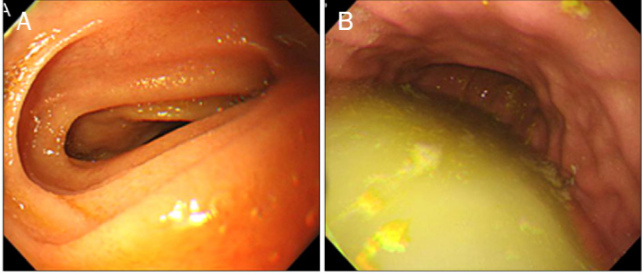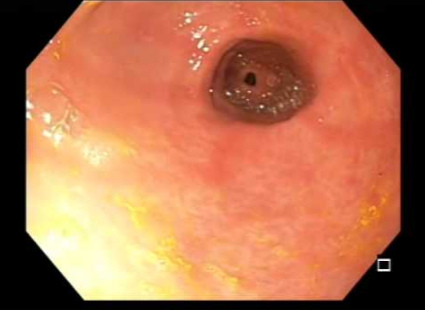When a bitter taste appears in the mouth, there is no person who would not be alerted by this symptom. Repeated repetition of these unpleasant sensations makes one suspect that they were caused by bile in the stomach. Alertness immediately arises: what is the cause of such a reflux of bile, is it possible to cure this disease, and whether these manifestations can be a sign of an oncological lesion of the stomach or intestines. To answer these questions, you need to carefully consider this problem.
Bile is a product of the activity of the liver, through the ducts of which it enters the gallbladder, where it accumulates and from where it takes part in digestion. It contains in its composition phospholipids, pigments, bile acids, cholesterol. With the help of bile in the intestine, important biochemical processes occur:
- absorption of calcium and fat-soluble vitamins;
- emulsification of fats;
- synthesis of triglycerides;
- splitting and assimilation of lipids;
- stimulation of intestinal peristalsis and the full functioning of the pancreas;
- inactivation of pepsins;
- destruction of pathogenic microorganisms.
Usually, all these processes occur in different parts of the intestine, their mucous membrane is adapted to these processes. Prevents bile from entering the stomach - a muscular ring that functions in a unilateral mode, passing chyme (a lump of food) into the intestine.
Bile ingestion causes heartburn.
Under certain conditions, the osmotic pressure in the small intestine increases. Bile and digestive juice secreted by the pancreas accumulate in the intestinal lumen and thereby disrupt its peristalsis. This stagnation leads to an increase in the size of the duodenum 12. The sphincter relaxes, and the contents of the intestines go where they should not go - into the stomach. This state is characterized as
The reasons
Determination of the etiology of reflux is very important for the choice of treatment tactics. Possible factors affecting the appearance of bile reflux:
- Intestinal injury, hernia, tumor processes - the consequences and complications of these conditions lead to a narrowing of the intestinal lumen and an increase in internal pressure in it.
- Pregnancy - a growing fetus squeezes the digestive tract, contributes to the reflux of bile into the stomach.
- Taking drugs that relieve muscle spasm and relaxants - a side effect of these drugs is the relaxation of the muscle ring of the sphincter. Through the lumen of a loosely closed sphincter, bile penetrates.
- Scars after surgery on the sphincter lead to its incomplete closure.
- hereditary predisposition.
- Chronic duodenitis - inflammation and swelling of the mucosa resulting from this disease, increase pressure and cause reflux of intestinal contents in the opposite direction.
- Enzyme deficiency when a large amount of fatty, fried, smoked food, pickles, alcohol enters the body.
- Physical activity immediately after eating, or, conversely, sleep on the left side after a hearty meal.
- Smoking addiction.
Some of these causes reflux of bile into the stomach in a perfectly healthy person and can be eliminated by minor changes in diet and lifestyle. In more severe cases, treatment of the underlying disease that caused the bile reflux will be required.
How pathology manifests itself
Since bile reflux is not an independent phenomenon, but a symptom of various diseases, it can manifest itself in different ways. Most often felt:
- bitterness in the mouth, regardless of the meal;
- sour belching;
- heartburn;
- flatulence;
- nausea, vomiting;
- feeling of thirst;
- plaque on the tongue of yellow color;
- aching or spastic pain in the epigastrium;
- heat and profuse sweating after eating.
An accidental single manifestation of this pathology may be accompanied not by a complex of symptoms, but by only one or two signs.
Effects
Bile contains in its composition enzymes designed to break down food components - trypsin and lysolicetin. Once in the stomach, enzymes begin to actively act on the mucous membrane, irritating it. Bile acids also have a similar effect. In combination with pancreatic enzymes, also contained in the discharged secret, acids form a rather aggressive compound that destroys the upper layer of the gastric epithelium.
It disrupts the normal process of absorption of food components by intestinal villi (fats, proteins, carbohydrates). The body does not receive enough building material for organs and tissues, a person feels unwell. Areas of destroyed epithelium are converted into ulcers, the risk of oncological transformations is not excluded.
Diagnosis of the disease and differentiation with other diseases
The most accurate instrumental method for determining the pathologies of the gastrointestinal tract is when a special probe with a miniature camera at the end is inserted into the patient's esophagus. The image from it is transmitted to the screen, on which, with this pathology, you can see:
- swelling and redness of the walls of the stomach;
- gaping sphincter;
- atrophic changes;
- degeneration of the epithelium of the intestines and stomach (metaplasia);
- erosion on its surface.
During the study, the doctor simultaneously takes the contents of the stomach to determine the acidity of gastric juice. If necessary, a daily study of the level of acidity with a biochemical study of the juice is carried out.

Endoscopy results. Observed (A) Partial obstruction of the duodenum. (C) A lake of bile in the stomach.
Additional diagnostic methods:
- X-ray examination using barium to determine the backcast.
- Ultrasound to determine the thickening of the mucosa and the appearance of gas bubbles from the duodenum 12.
- Radionuclide biliary scintography is a method carried out in a hospital to determine reverse reflux.
Treatment: conservative and radical
Single manifestations of pathology do not require special treatment. It is enough to make adjustments to the diet, take antacids, and the problem will be solved. Another thing is when the reflux of bile into the stomach is a manifestation of a serious pathology, then the treatment will be comprehensive, aimed at eliminating the cause of the underlying disease.
Medicines:
- Drugs that correct the activity of liver and gallbladder cells - Ursodex, Ursofalk, Urosliv. They restore liver cells, change the properties of bile in the direction of decreasing density, and ensure the destruction of gallbladder stones.
- Gastroprotectors for restoring the intestinal mucosa - De-nol, Venter, Rebapimide, Ulgastran;
- Proton pump inhibitors to reduce the concentration of hydrochloric acid, especially in the sphincter area - Pariet, Pantoprazole, Dexilant, Lansoprazole, Nexium.
- Drugs to improve gastrointestinal motility to stimulate the gallbladder and increase intestinal tone, contributing to better evacuation of its contents - Motilium, Raglan, Metoclopromide, Itomed, Perinorm, Ganatom.
- Medicines to reduce the concentration of gastric juice, reduce acid activity - Maalox, Gelusil, Phosphalugel, Gaviscon, Gastal.
- Adsorbents for the speedy removal of bile from the stomach - Smecta, Polyphepan, Laktofiltrum, white activated carbon.
- Myotropic antispasmodics for removing excess bile.
- Cholesterics to stimulate the gallbladder.
To improve the general condition and symptomatic treatment, the patient takes vitamins, sedatives.
In addition to conservative treatment, radical methods of surgical intervention are used if the underlying disease requires it. Correction of the wrong is carried out using laparoscopy - a gentle method of minimally invasive surgery. Treatment of a hernia, tumor and other pathologies of the intestine is carried out with the help of a larger surgical operation.
Diet is an essential component of treatment
An obligatory component of complex treatment is a diet. Patients with similar manifestations are advised to eat often, in small portions. Dishes should not irritate the stomach and intestines, that is, be slightly warm, or at room temperature. Light nutritious foods are recommended: lean meats and fish, rice, pasta, steam cutlets and meatballs from rabbit and turkey, soufflé, porridge in water or diluted milk.
The use of salads from vegetables and fruits with light dressing, stewed and boiled pumpkins, potatoes, fruit desserts from pears, watermelons, the use of dried fruits, honey are welcome. It is strictly forbidden to enter into the menu, or a restriction is required for the following products:
- pickles,
- smoked meats,
- fried foods,
- dairy products with high fat content,
- spices and spices,
- eggs,
- salo,
- coffee, cocoa,
- chocolate.
These products require a large amount of bile for their digestion, so such restrictions are imposed on their use. The diet should be combined with the rejection of bad habits, the introduction of daily feasible physical activity.
Prevention measures
To prevent the quality of life from suffering from the appearance of bile reflux, you need to take preventive measures:
- Include in your diet more fermented milk products, kissels, cereals;
- Do not overeat, maintain optimal weight;
- Stop smoking;
- Reduce the proportion of food harmful to the stomach, coffee, strong broths in the diet, give up alcohol;
- At the first unpleasant sensations in the form of pain in the abdomen, bitterness in the mouth, be examined by a gastroenterologist, strictly follow his recommendations.
Complications of bile reflux
If this pathology is not treated, in addition to discomfort, complications may occur:

Throwing into the stomach of a secret that is atypical for its functioning must be treated with conservative or radical methods, using a diet. These methods will help relieve inflammation, prevent changes in epithelial cells, and relieve unpleasant symptoms.

